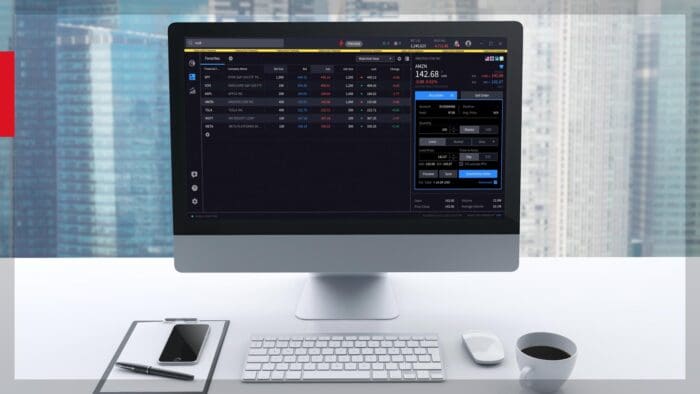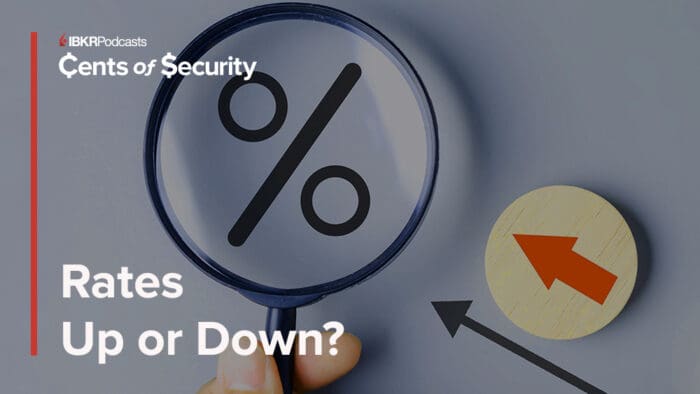In a previous article, I discussed how the Forecast Contracts that undergird ForecastEx’s climate prediction markets can be used similarly to parametric insurance for catastrophic weather events, such as hurricanes, tornadoes, severe wind, and hail. However, the utility of Forecast Contracts is not restricted to these types of catastrophic extremes, and they also have applications for hedging against the downside risk of low revenue for businesses caused by seemingly more innocuous weather variability in temperature, rainfall, and wind.
In such applications, Forecast Contracts can be thought of similarly to weather derivatives, such as the futures and options traded on the Chicago Mercantile Exchange (CME).
A common desire of firms is to make future revenue streams steadier and more predictable. Utilities, natural-gas producers, wind-farm owners, and agribusinesses, among others, all face substantial revenue swings when temperature, wind, or precipitation depart from normal conditions. Weather derivatives have been used to stabilize these flows as they can be used to hedge against downside risk and transfer that risk to investors willing to take it on for a premium.
Weather derivatives have been most commonly applied in the energy sector, utilizing indices such as “heating degree days” and “cooling degree days,” which relate to the revenue of utility and energy companies. These temperature indices are designed to reflect energy demand for heating and cooling, respectively. They measure deviations from daily average temperatures of 65°F, based on the understanding that people tend to activate their air conditioners when daily averages exceed 65°F (cooling degree days) and switch on their heat when daily averages fall below 65°F (heating degree days).
The weather futures and options contracts traded on the CME can be somewhat complex, and their pricing is not necessarily straightforward or easy to assess. In contrast, Forecast Contracts can offer the same fundamental services as weather futures and options, but they do so using a more straightforward and transparent pricing structure: Each contract settles at $1 or $0, and the price directly reflects the implied probability rather than using a dollar index level or having to assess an option premium.
I’ll illustrate with a hypothetical example that utilizes concrete numbers.
Suppose a utility generates revenue by selling natural gas to customers during the cold winter months, and there is a ForecastEx prediction market for heating degree days within its domain. ForecastEx offers Forecast Contracts at various strike levels that cover a wide range of probabilities of exceedance. Assume the strikes, probabilities, and prices are distributed as shown below.
Made with Excel
Now, suppose the utility has an average winter revenue of about $50 million, and this revenue fluctuates with the number of winter heating degree days, where a decrease in heating degree days leads to lower revenue and vice versa. The relationship between heating degree days and the utility’s revenue is shown in Panel A of the figure below. For illustrative purposes, I will assume a high correlation between the two (r² = 0.92), which effectively means that Basis Risk is low.
In some years, heating degree days will be well below normal, resulting in poor revenue years (Panel A below).
Suppose the utility wants protection against downside risk in general, but wants incrementally more protection the warmer the winter and the less the revenue. In particular, they do not want to absorb the shortfalls from the poor years highlighted in Panel A.
To achieve this, the utility could purchase NO contracts for exceeding low heating degree day strikes. The utility does not have to choose one particular threshold to buy NO contracts at and, rather, they could buy all three tiers that represent warmer than ‘normal’, warmer than ‘mild’, and warmer than ‘very mild’, simultaneously (highlighted with the red box in the table above). These tiers are also represented by the bottom three dashed lines in Panels A and B in the figure below.
The utility could allocate, say, $2,000,000 per year (4% the size of its winter revenue) to purchasing Forecast Contracts that protect against these revenue shortfalls and distribute those funds with 50% going to ‘warmer than normal’ (NO price = $0.50), 30% going to ‘warmer than mild’ (NO price = $0.25), and 20% going to ‘warmer than very mild’ (NO price = $0.10). Such a funding allocation (cost and average expected payout for each tier) is illustrated in Panel B below.
Source: MATLAB
Hypothetical demonstration of downside revenue hedging for a utility using ForecastEx Forecast Contracts (produced using MATLAB).
This funding allocation means that the utility will receive a payout for any winter that is warmer than average, and the payout will be larger the warmer the year. The tradeoff, of course, is that when the winter is colder than average and revenues are above average, the contracts settle at $0.00 and do not payout.
This dynamic is illustrated in Panel C above, which shows the total cost (red, darker = milder winter) and payout (green, darker = milder winter) of the Forecast Contract investment each year. In half of the years, the Forecast Contracts expire with no value, resulting in the utility incurring a loss on the Forecast Contract investment. In the other half of the years, the utility breaks even or makes a profit on the Forecast Contract investment. Critically, however, in very warm years with very low revenue, all three Forecast Contract tiers pay out, resulting in a substantial net profit that offsets the loss.
In this example, I assume that the prediction market is efficient, meaning that Forecast Contracts are priced perfectly. Consequently, the expected value of buying any contract is zero, and the annual mean payout equals the annual mean cost over the entire period1. In reality, a firm can profit from superior weather forecasts and adjust its position at any time based on new information. However, the key point here is that “beating the market” is not necessary for the strategy to provide value through hedging downside risk.
Panel D above illustrates the difference between revenue streams in the original scenario without hedging, using Forecast Contracts (black line, identical to the black line in Panel A), and the hedging scenario using Forecast Contracts (green line).
What jumps out is that the Forecast Contract hedging strategy (green line in Panel D) essentially eliminated the four worst revenue years. It also preserved the good revenue years, but to a slightly lesser degree. The hedging scenario is much less volatile and hugs the average much more closely than the non-hedging scenario: its standard deviation is roughly halved, and the number of years very near average more than doubles (Panel E).
Furthermore, this reduction in volatility is achieved essentially for free because the Forecast Contracts netted out to zero.
However, people and companies tend to be risk-averse and are typically willing to pay a risk premium to avoid downside risk. In weather derivatives, option sellers receive a premium for taking on the risk that the buyer wants to eliminate. In other words, the utility might be willing to purchase instruments at an expected loss to smooth earnings and reduce variance. In ForecastEx prediction markets, this dynamic would be represented by the utility bidding NO prices up, pushing them higher than their true probability. This means that YESs become inherently undervalued or go on sale. In this scenario, YESs become attractive from a purely probabilistic standpoint, but they should also remain uncorrelated with mainstream equities or bonds (because winter temperature does not significantly impact the macroeconomic business cycle). Thus, buying a suit of undervalued YESs can be viewed as an asset class that mitigates the volatility and downside risk of a broader investment portfolio, offering a hedging service to the counterparties as well.
In summary, forecast contracts provide weather-exposed firms with a simple and straightforward way to smooth earnings. When markets are efficient, the strategy is actuarially neutral (costs and payouts balance over time) and the downside revenue hedging is obtained essentially for free. On the other hand, firms should be willing to pay a risk premium to hedge risk, which is what attracts counterparties to the market. Finally, any skillful forecaster who holds a predictive edge can utilize the market to generate profits.
—
Originally Posted on June 24, 2025
Footnote
1 This example ignores two additional attributes of ForecastEx Forecast Contracts that would slightly alter the numbers, one to the utility’s disadvantage and one to its advantage. The slight disadvantage is that ForecastEx charges a fee of one cent for each pair of $1 YES and NO contracts. In other words, YESs and NOs are paired, and a purchase clears when the price of a YES and the price of a NO sum to $1.01, not $1.00; the extra $0.01 is the fee. The advantage to the utility is that ForecastEx invests the collateral and passes 100% of the earnings back to its members each month, which can be used as an incentive coupon. Currently, Interactive Brokers offers an incentive coupon at a 3.83% annualized rate, which accrues daily based on the contract’s dynamic market price and is paid monthly.
Disclosure: Interactive Brokers
The analysis in this material is provided for information only and is not and should not be construed as an offer to sell or the solicitation of an offer to buy any security. To the extent that this material discusses general market activity, industry or sector trends or other broad-based economic or political conditions, it should not be construed as research or investment advice. To the extent that it includes references to specific securities, commodities, currencies, or other instruments, those references do not constitute a recommendation by IBKR to buy, sell or hold such investments. This material does not and is not intended to take into account the particular financial conditions, investment objectives or requirements of individual customers. Before acting on this material, you should consider whether it is suitable for your particular circumstances and, as necessary, seek professional advice.
The views and opinions expressed herein are those of the author and do not necessarily reflect the views of Interactive Brokers, its affiliates, or its employees.
Disclosure: ForecastEx
Interactive Brokers LLC is a CFTC-registered Futures Commission Merchant and a clearing member and affiliate of ForecastEx LLC (“ForecastEx”). ForecastEx is a CFTC-registered Designated Contract Market and Derivatives Clearing Organization. Interactive Brokers LLC provides access to ForecastEx forecast contracts for eligible customers. Interactive Brokers LLC does not make recommendations with respect to any products available on its platform, including those offered by ForecastEx.
Disclosure: Forecast Contracts
Forecast Contracts are only available to eligible clients of Interactive Brokers LLC, Interactive Brokers Canada Inc., Interactive Brokers Hong Kong Limited, Interactive Brokers Ireland Limited and Interactive Brokers Singapore Pte. Ltd.
Disclosure: ForecastEx Market Sentiment
Displayed outcome information is based on current market sentiment from ForecastEx LLC, an affiliate of IB LLC. Current market sentiment for contracts may be viewed at ForecastEx at https://forecasttrader.interactivebrokers.com/en/home.php. Note: Real-time market sentiment updates are only active during exchange open trading hours. Updates to current market sentiment for overnight activity will be reflected at the open on the next trading day. This information is not intended by IBKR as an opinion or likelihood of a potential outcome.
Disclosure: Forecast Contracts Risk
Futures, event contracts and forecast contracts are not suitable for all investors. Before trading these products, please read the CFTC Risk Disclosure. For a copy visit our Warnings and Disclosures page.
Disclosure: CFTC Regulation 1.71
This is commentary on economic, political and/or market conditions within the meaning of CFTC Regulation 1.71, and is not meant provide sufficient information upon which to base a decision to enter into a derivatives transaction.




















Join The Conversation
For specific platform feedback and suggestions, please submit it directly to our team using these instructions.
If you have an account-specific question or concern, please reach out to Client Services.
We encourage you to look through our FAQs before posting. Your question may already be covered!